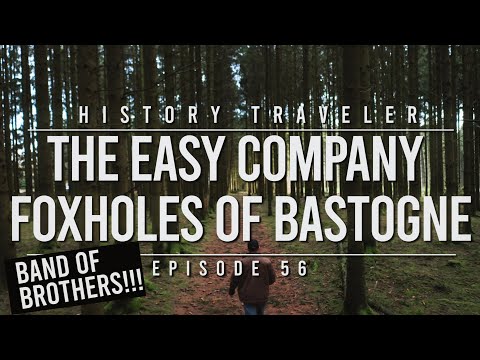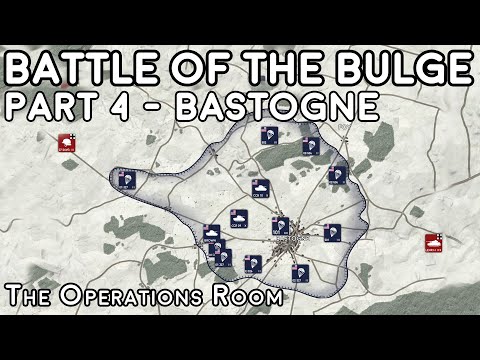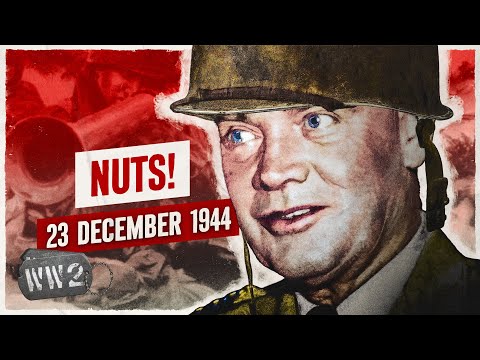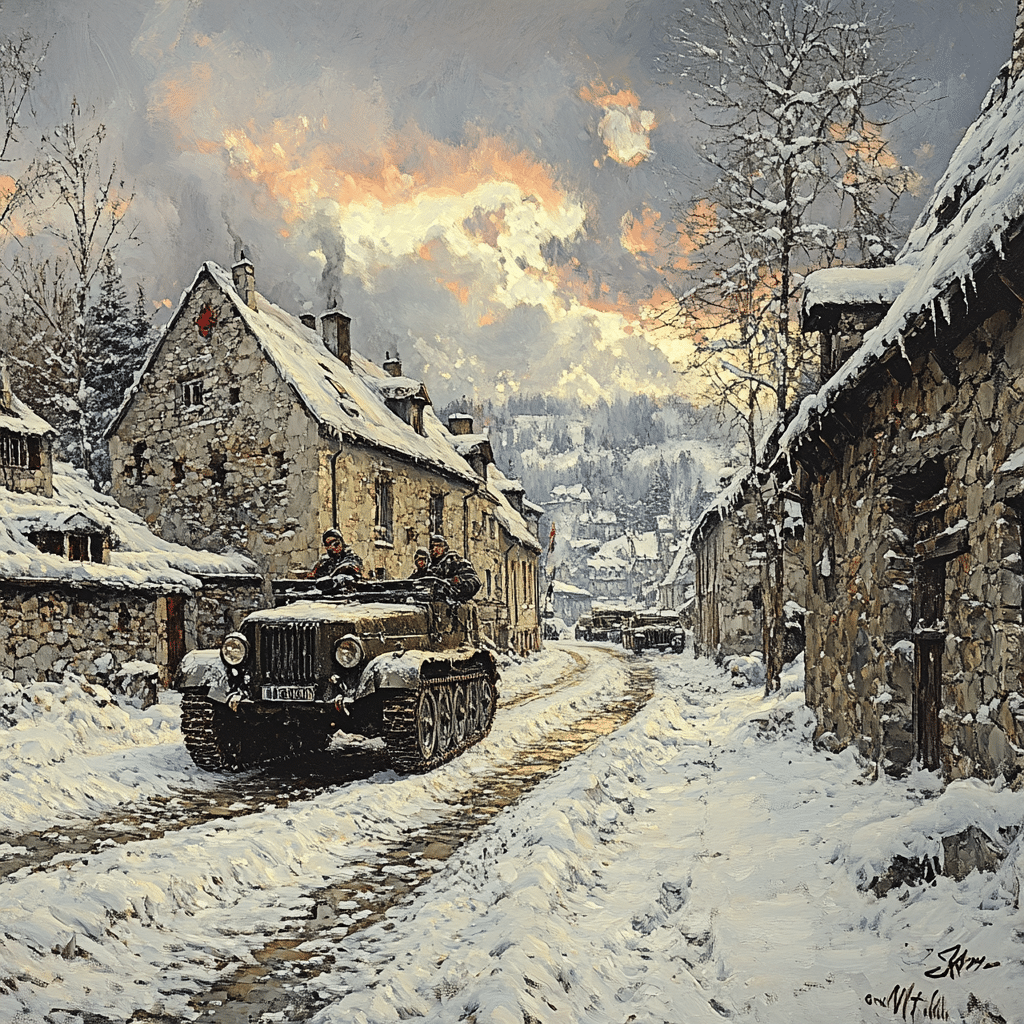
Bastogne The Fierce Battlefield Of The Bulge
Bastogne: The Fierce Battlefield of the Bulge
Bastogne, a small yet strategically crucial town in Belgium, became emblematic of the Battle of the Bulge during World War II. This battle marked one of the last major German offensives on the Western Front. The town, with its intricate road network, served as a key point for Allied forces during the brutal winter of late 1944. Not just a physical location, Bastogne has come to symbolize resilience against the relentless Nazi advance and the indomitable spirit of the troops stationed there.
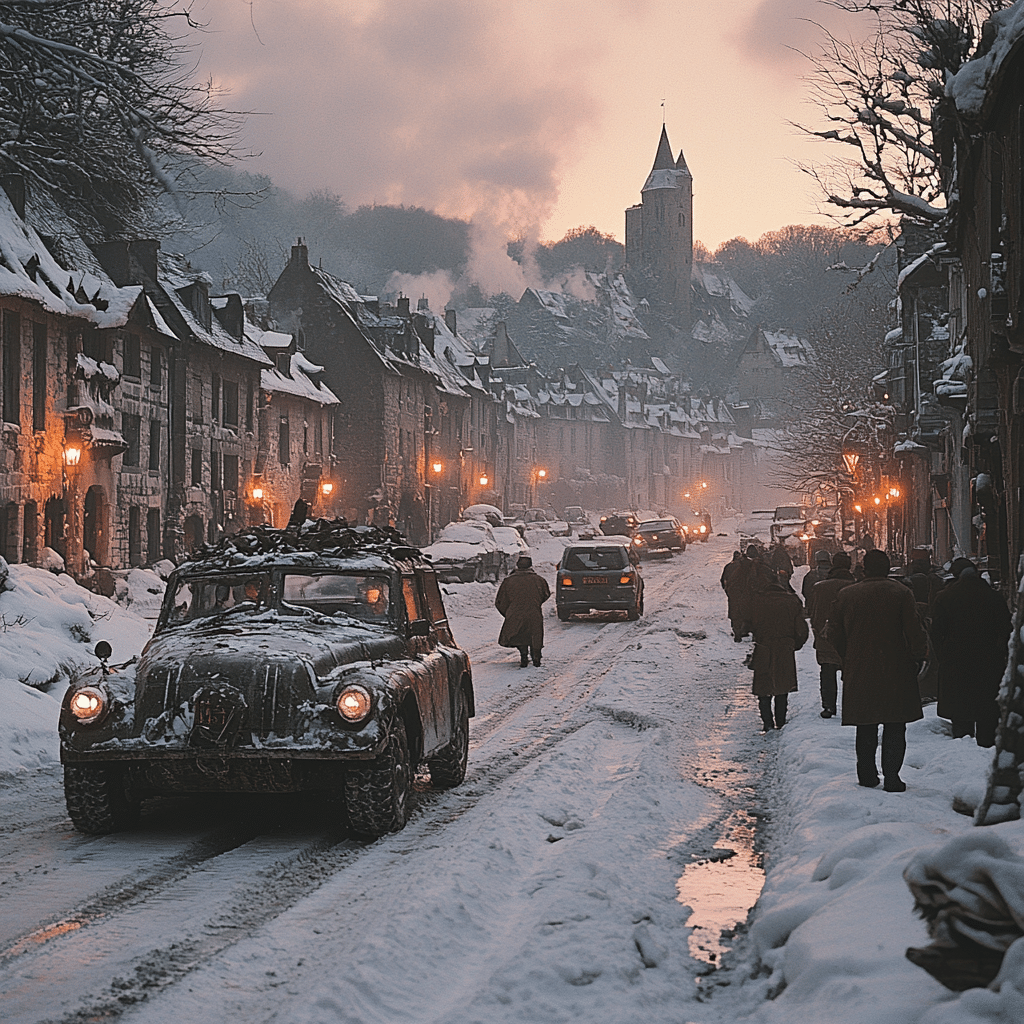
1. The Historical Significance of Bastogne in WWII
The historical significance of Bastogne in WWII cannot be overstated. The site held a unique position for the Allies, allowing them to pivot and strategize as German forces pushed through the Ardennes. As the battle unfolded, Bastogne symbolized the stalemate between American courage and German aggression. Surrounded by enemy troops, American forces had to muster every ounce of resolve to hold their ground against overwhelming odds.
In the depths of winter, the chilling temperatures plummeted to as low as -28 degrees Celsius, creating a phenomenally hostile environment for both sides. The fierce fighting around Bastogne inflicted staggering losses—25,000 German lives and 23,000 American lives were roughly estimated to be lost in that area alone. Additionally, around 3,000 Belgian civilians also perished, a stark reminder of the human cost of war. This makes Bastogne not just a battleground but a poignant chapter in the overarching narrative of WWII.
General Patton’s Third Army recognized the importance of Bastogne and launched a daring counteroffensive to break the siege. The successful relief operation on December 26, 1944, stands as a pivotal point in the battle and showcases the will and resilience of the Allied forces. Bastogne was transformed from a beleaguered outpost to a resounding victory, highlighting the town’s crucial role in the larger tapestry of the war.
2. Top 5 Moments That Defined the Siege of Bastogne
2.1 The Arrival of the 101st Airborne Division
The arrival of the 101st Airborne Division in mid-December 1944 sent a wave of hope amidst despair. Soldiers were rolled into one of the harshest winter conditions imaginable, rationed with supplies that barely met their needs. Equipped with bravery and determination, they held their ground against waves of aggressive German assaults. This marked the beginning of a ferocious standoff that would be etched into history.
2.2 General McAuliffe’s Famous Response
One of the most unforgettable moments occurred on December 22, when General Anthony McAuliffe received a German ultimatum to surrender. His one-word response—“Nuts!”—became legendary, representing the unshakeable grit of American soldiers. This refusal not only galvanized the defenders of Bastogne but also served to inspire the Allies at large.
2.3 The Role of Supply Lines: The Bastogne Airlift
As the siege continued, the dire need for supplies became crucial. The Allies executed what would be known as the Bastogne Airlift, delivering ammunition, food, and medical supplies directly into the besieged town. Despite brutal weather conditions that hampered visibility, aircrews executed daring missions, demonstrating remarkable courage. This mission not only bolstered the morale of the troops but also showcased cunning military strategy in a challenging time.
2.4 Counteroffensive: The Relief of Bastogne
On December 26, the skies finally cleared, allowing General Patton’s Third Army to break through enemy lines. This counteroffensive not only freed Bastogne but also shifted the momentum of the Battle of the Bulge. The liberation led to a remarkable turnaround for the Allies, which they capitalized on in the following weeks.
2.5 The Legacy of Bastogne: Memorializations and History
Today, the legacy of Bastogne is honored through numerous memorials and museums, ensuring that the sacrifices made are not forgotten. The Bastogne War Museum and the Mardasson Memorial serve as vital sites for education and remembrance. These locations pay tribute to the courage of the men who defended the town against overwhelming odds, maintaining the memory of their sacrifices for generations to come.
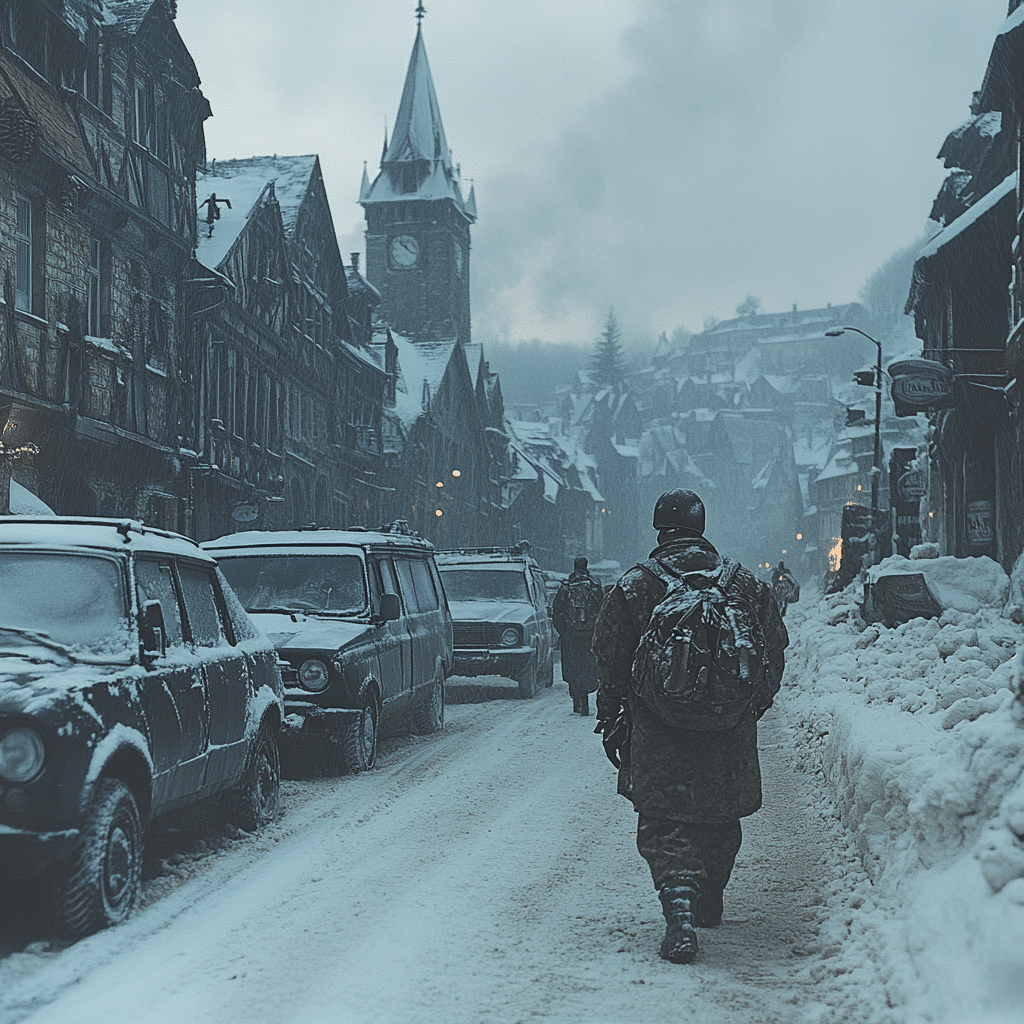
3. The Modern Resonance of Bastogne in Pop Culture
Bastogne’s story has found a place in pop culture, ensuring that its significance remains alive today. The critically acclaimed HBO miniseries “Band of Brothers” dramatizes the experiences of Easy Company as they engage in the fierce fighting around Bastogne. These portrayals act as bridges, allowing younger generations to connect with the harrowing events that unfolded during the Siege of Bastogne.
In addition to television, the cinematic landscape is also rich with references to Bastogne. Movies tackling the themes of camaraderie, sacrifice, and heroism capture the essence of what it meant to fight in such dire conditions. These films contribute to a collective understanding of the struggle, reminding audiences of the emotional and human aspects of warfare beyond the statistics.
4. Oliphant in the Midst of Warfare: The Human Element in Bastogne’s Story
While strategies and military maneuvers were vital to maintaining control over Bastogne, the individual stories of soldiers breathe life into the events of the siege. The narratives of camaraderie, fear, and hope among troops provide insight into the rich human experience behind those harsh winter battles.
Private First Class Eugene Sledge’s memoirs, for example, paint a vivid picture of life in the trenches. The challenges he faced, alongside his comrades, illustrated not just the physical brutality of war, but also the emotional toll and the strain of uncertainty. These personal accounts resonate deeply, highlighting the often-overlooked human side of military history.
5. Ipanema’s War Stories: Evoking Emotion through Art and Documentaries
Filmmakers have long been inspired by the intensity of historical military events, and Bastogne is no exception. Documentaries and feature films alike have sought to explore both the battles and the moral complexities inherent in warfare. Projects like “The Thin Red Line” and “Saving Private Ryan” delve into more than just the mechanics of combat; they address the moral quandaries of those engaged in these conflicts.
More contemporary productions such as the Brazilian film “Ipanema” meld historic battles with rich personal narratives. By juxtaposing these grand events with emotional storytelling, filmmakers create a unique experience that evokes profound feelings of connection and reflection. Such works amplify the legacy of places like Bastogne, ensuring that the lessons learned resonate through art and culture.
The Enduring Legacy of Bastogne: Resilience and Remembrance
Bastogne stands as a powerful symbol of resilience, courage, and the enduring spirit of those who fought for freedom. The lessons stemming from the severe winter months of 1944 continue to echo today, serving as a reminder of the sacrifices made and the unyielding determination of humanity in the face of adversity. As we reflect on this compelling narrative, Bastogne remains an important case study in the complexities of war, highlighting both the struggles faced by those on the front lines and the ever-present hope for peace.
Understanding Bastogne helps us appreciate the heavy toll paid during this dramatic chapter in history. The experiences and sacrifices of those who fought, alongside the civilians caught in the turmoil, demand remembrance and reflection. In the modern era, as stories of bravery and inspiration continue to be told through films and documentaries, the spirit of Bastogne lives on, ensuring that each new generation understands the weight of courage that marked those fierce winter days.
Bastogne: The Fierce Battlefield of the Bulge
History in the Making
Bastogne, a small town in Belgium, played a pivotal role during World War II. It was the site of the famous Battle of the Bulge in December 1944, where American forces, surrounded by German troops, famously held their ground. It’s said that Bastogne’s defenders, led by General McAuliffe, responded to a German demand for surrender with a simple, “Nuts!” This spirited defiance exemplified American resilience. Speaking of spirit and tenacity, you might find the wild adventure of Drive Mad 2 an interesting watch, reflecting that same kind of resolve in a completely different context!
Life After the Battle
Post-war, Bastogne transformed from a battleground to a symbol of heroism and sacrifice. The roads around the town still echo the footsteps of soldiers who fought fiercely for freedom. Nowadays, the town is a tourist hotspot crucial in preserving its history. Visitors often research local sites or look for practical advice like Homeowners insurance before making their trip. It makes sense, right? You wouldn’t want to miss the chance to explore landmarks like the Mardasson Memorial or the Bastogne War Museum, which offer deep insights into the events of the time.
Pop Culture Meets History
The legacy of the battle has also crept into pop culture, culminating in films and documentaries that capture those days. One film that draws attention to similar themes of triumph against the odds is Chandu Champion, and you can catch upcoming Chandu Champion Showtimes to see if it resonates with the heroic narrative of Bastogne. Additionally, the town itself has become part of a larger cultural tapestry, inspiring countless stories and even modern heroes. It’s fascinating how the fight for freedom still resonates, much like how current sports figures, like Cam Newton, keep fans engaged in today’s arena—curious Where Is Cam newton now? Just like the courageous men and women of Bastogne, his journey is worth following!
Bastogne is more than just a historical site; it’s a testament to the human spirit. From the intense battles fought in the snow to the peaceful remembrance experienced today, the town embodies the struggles and triumphs of those who stood firm in the face of adversity. Whether you’re a history buff or love a good story—just like fans of Amy Anderssen might appreciate—Bastogne continues to offer nuggets of inspiration that transcend time.
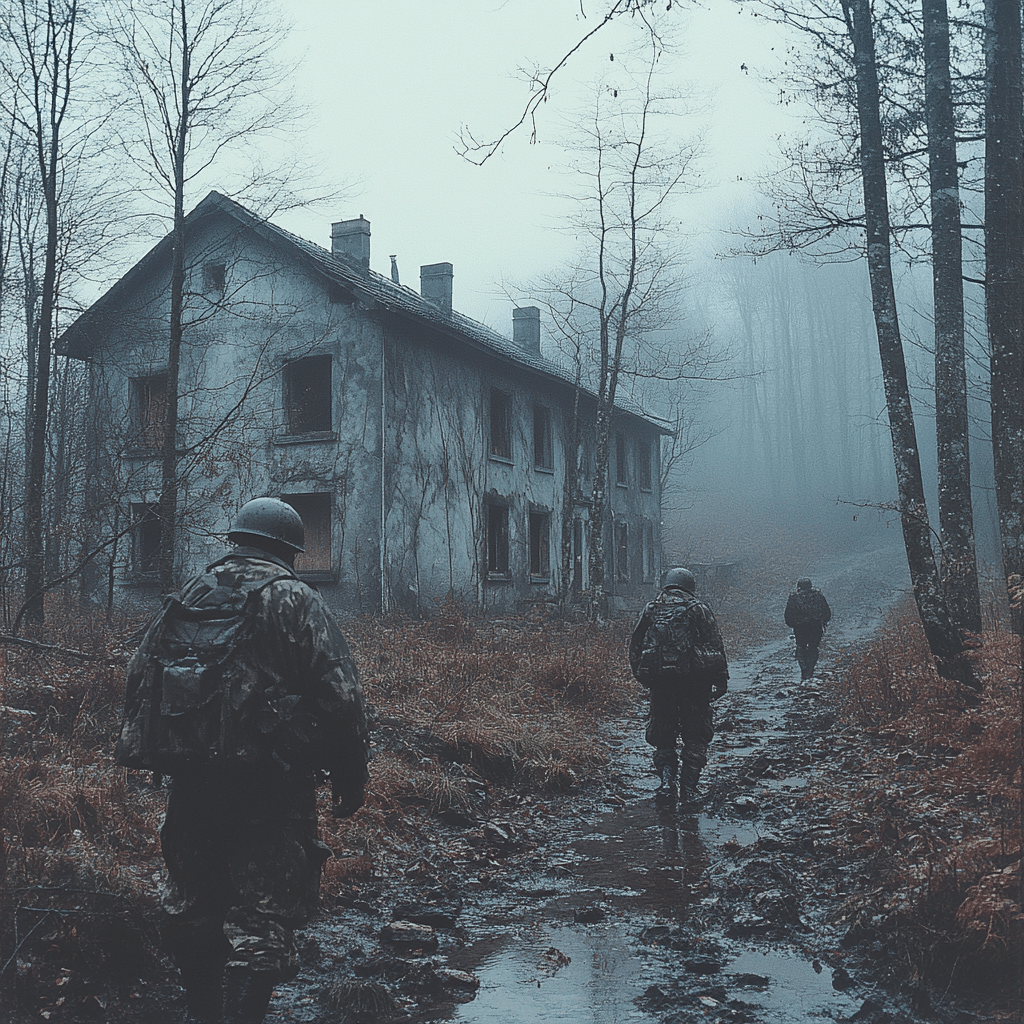
How many US soldiers died in Bastogne?
About 23,000 American soldiers lost their lives in the Bastogne area during the fierce fighting of late 1944.
How cold was it in Bastogne in 1944?
The winter in Bastogne was brutal, with temperatures sometimes dipping below minus 28 degrees Celsius at night, making conditions extremely harsh for the soldiers.
How long was the 101st in Bastogne?
The 101st Airborne Division held Bastogne for about six days, from December 20 to December 26, 1944, until they were relieved.
Who broke the siege of Bastogne?
General Patton’s troops broke the siege of Bastogne after a relentless fight through tough conditions, arriving just in time to support the besieged 101st Airborne.
Did soldiers freeze to death in the Battle of the Bulge?
Yes, many soldiers did suffer severely from the cold, and there were instances of freezing to death during the harsh winter of the Battle of the Bulge.
What was the bloodiest Battle in US history?
The Battle of Gettysburg is often considered the bloodiest battle in U.S. history, but the high casualties in Bastogne were also significant.
Why couldn t the Germans take Bastogne?
The Germans couldn’t take Bastogne due to the fierce resistance by the American troops, who were well-prepared to hold the city despite being surrounded.
How far did the Germans get in the Battle of the Bulge?
During the Battle of the Bulge, German forces advanced deeply into Allied territory, pushing as far as 90 miles in some areas before being halted.
Why was holding Bastogne so important?
Holding Bastogne was crucial because it served as a major transportation hub for the Allies, controlling key roads that were vital for movement and supply.
How far did Patton’s army travel to Bastogne?
Patton’s army traveled about 100 miles to reach Bastogne, moving quickly to aid the trapped 101st Airborne Division.
Did Patton save the 101st?
Yes, Patton’s forces played a key role in saving the 101st by breaking the siege and providing much-needed relief.
Did Patton break through to Bastogne?
Patton did successfully break through to Bastogne, allowing for the 101st Airborne to finally receive reinforcements and supplies.
Who did the German army soldiers fear the most?
German soldiers feared American General George Patton the most due to his aggressive tactics and rapid advances in battle.
Who killed the most German soldiers in WWII?
The Soviets, particularly under General Zhukov, are credited with killing the most German soldiers in WWII through their extensive campaigns on the Eastern Front.
What did General McAuliffe really say?
General McAuliffe famously replied “Nuts!” when the Germans demanded the surrender of his troops in Bastogne, showcasing his determination to hold the city.





